INTERVIEW: Nat Geo Live focuses on Mozambique’s Gorongosa with Bob Poole
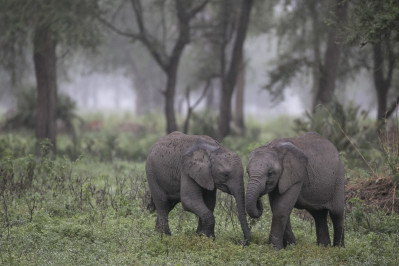
Gorongosa National Park in Mozambique is one of those places that has been greatly affected by the country’s turbulent past, and yet it stands as one of the continent’s major wildlife success stories.
Once a beacon for Africa’s iconic fauna, the park endured several setbacks and seemingly endless warring for years.
The park was founded in 1960 and became a successful tourist destination for visitors on safari, according to the park’s website. Apparently the lions, elephants and other animals attracted the interests of John Wayne, Joan Crawford and other top-list celebrities. A war for independence from Portugal followed, plus a destructive civil war that lasted 15 years, from the late 1970s to early 1990s. The animals in the park were in dire need of help. A 1994 count surveyed only 100 remaining elephants and other antelope species.
It took a unique a public-private partnership, and the help of philanthropist Greg Carr and Professor E.O. Wilson, among others, to turn the fate of Gorongosa around. Today, the national park stands as a major success story in southern Africa and a destination once again for tourists.
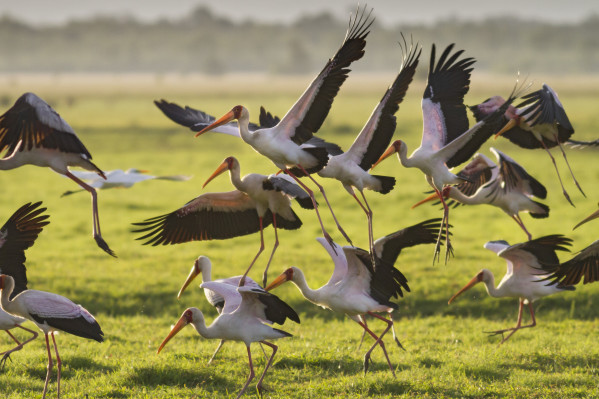
Bob Poole, a cinematographer with National Geographic, has worked extensively in Gorongosa, and he will share his stories from the front lines of the recovery Tuesday, March 29 at the NYU Skirball Center for the Performing Arts in Manhattan, N.Y. Tickets are still available for the Nat Geo Live event, which is titled Gorongosa Reborn: A Cameraman’s Journal.
“My presentation, it’s kind of a story about my life,” Poole said recently during a phone interview. “How I ended up with National Geographic and how my career led me to a national park in Mozambique called Gorongosa and the amazing story that’s taking place there.”
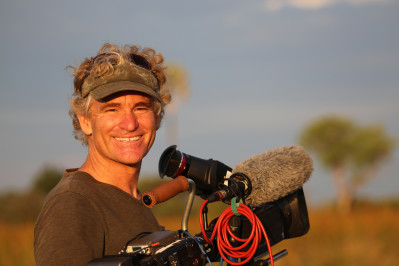
Poole was born in the United States but moved to Africa when he was 3 years old. His parents were working in the Peace Corps at the time, and his father served as the Corps’ co-director in Malawi and then later Kenya, where Poole spent most of his formative years.
“My father went from the Peace Corps into wildlife conservation, so we grew up with wildlife,” he said.
His time with National Geographic has brought him to many places around the globe, but in his more than 20 years of cinematography work, he has taken a deep interest in and focus on Africa and wildlife conservation.
“One thing after another eventually led me to Gorongosa National Park in Mozambique,” he said. “The story of the park is that it had to be one of the greatest parks in Africa, and it had unfortunately been destroyed by civil war. The habitat was intact, but 90 percent of the big animals were gone. … And so I first arrived there in 2008 to do a film for National Geographic, and when it was over, I didn’t want to leave. One project after another kept me in the park. It eventually led to this series for PBS and National Geographic.”
During the civil war, Poole said, the elephants were massacred. Soldiers from both sides killed the enormous and majestic mammals not only for their meat but also for their ivory tusks. They would apparently trade the ivory for guns and ammunition in the multi-year conflict.
“They say like 95 percent of the elephants were killed, and the ones that are left, many of them are tusk-less because there’s about 3 percent tusk-lessness natural in African elephants. And those are the ones that are left because the soldiers didn’t waste bullets on elephants without ivory,” he said. “So the elephants there, there’s not a lot of ivory, which [today] keeps the bad guys out in a sense. … And there’s plenty of space now for elephants, and they’re recovering. But with elephants, they live long lives, so it’s going to take a long time for the elephant population to stabilize. There’s different kinds of poaching, and one of the issues that the park does face is meat poaching. But it’s difficult to control, but the park is doing amazing stuff. The wildlife has rebounded in the years that I’ve been there incredibly.”
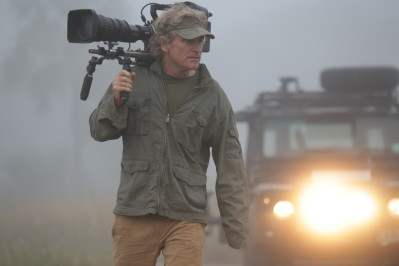
Poole was struck by Gorongosa’s beauty. The national park’s acres of wilderness are mostly without roads, and “that is kind of an amazing thing to see in Africa these days,” he said.
“[In 2008], I didn’t see a lot of wildlife,” he said. “There was a few antelope, and some baboons and warthogs, and we did see elephants. This was from the air, but on the ground it was really tough.”
Poole spent enough time in the park to find the hotspots for wildlife viewing. Crocodiles, he found out, had survived the civil war in huge numbers. The birding was “amazing” as well. A few lions also roamed, and since 2008, many of these populations have boomed.
“There’s a wonderful guy named Greg Carr, an American philanthropist who had made a fortune in the tech world, and he was always interested in helping people,” Poole said. “It was the second poorest country after the war, and Greg had gone to Mozambique to see how he could help. He had looked around the country and realized that bringing the national parks system back would be fantastic because it would bring jobs for local people and foreign currency for the government if they could get the tourism business going. He looked around with the government at the different parks and asked about Gorongosa, and they said it had been the best. But it was far too gone. Let’s start there, so they signed a 20-year agreement of private-public partnership with the government. And that’s how this thing got started, and so they’ve been putting a lot of effort into restoring each national park. It’s fantastic.”
Poole’s documenting of this rebound in wildlife fits perfectly with his unique upbringing. With his parents and family in eastern Africa, he was always around wild animals and nature.
“We spent a lot of time in the bush growing up in the wilds of Africa,” he said. “My father unfortunately was killed in a car accident when I was 17 in Nairobi, and before he died, he had gotten me like a school holiday job working on a game catcher team. And … the helicopter pilot working on that flew off one day to work for National Geographic and invited me to go along, and the Geographic crew then invited me to work with them. So at a very early age I got exposed to National Geographic, and it led to a career as a cameraman. But I had not grown up watching TV or films. We never had that stuff in Africa growing up. So I got into it for the adventure, the idea of traveling around the world and seeing amazing places, and then I learned the craft of photography and filmmaking on the job, which doesn’t really happen that way anymore. I was really lucky.”
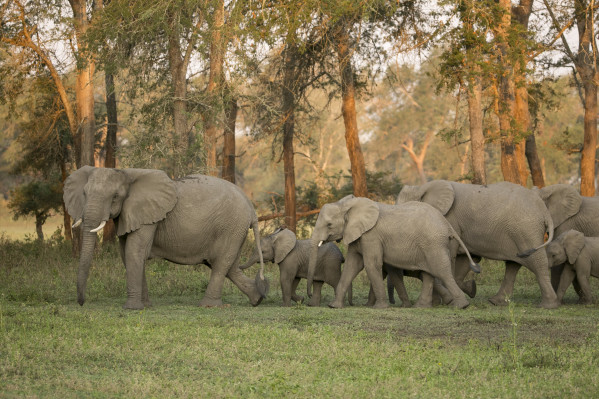
Poole’s sister, Joyce Poole, is also one of the foremost experts on elephant behavior and cofounder of ElephantVoices, an advocacy and conservation group.
“And she and I have collaborated since the beginning of my career as a filmmaker doing films really with National Geographic,” he said. “My first film for Geographic as a cameraman was a film that I pitched about her, and it was called Coming of Age with Elephants. She made remarkable discoveries at an early age that explains a lot about their behavior, and so from that time, Joyce and I have worked together on a lot of things. And she features strongly in the Gorongosa story because she came down years ago to have a look at the situation with elephants because they had been so heavily traumatized by war. It’s a very unique population, but elephants are amazing. They’re so much like us. They’re highly intelligent. They live in family groups. They live long lives. They take care of each other. They have fascinating lives and very interesting communication, all of this stuff. Elephants are very special to me.”
In addition to his national tour with Nat Geo Live, Poole recently finished work on Little Giant, a movie filmed in Kenya that premieres on National Geographic April 24. “I spent three months following a baby elephant and his family in the wild, a very exciting project,” he said. “That’s kind of the way it works with us: You finish one thing, and then hopefully you’re on to the next.”
By John Soltes / Publisher / John@HollywoodSoapbox.com
- Bob Poole will present Gorongosa Reborn: A Cameraman’s Journal Tuesday, March 29 at 7:30 p.m. at the NYU Skirball Center for the Performing Arts. Click here for more information.

